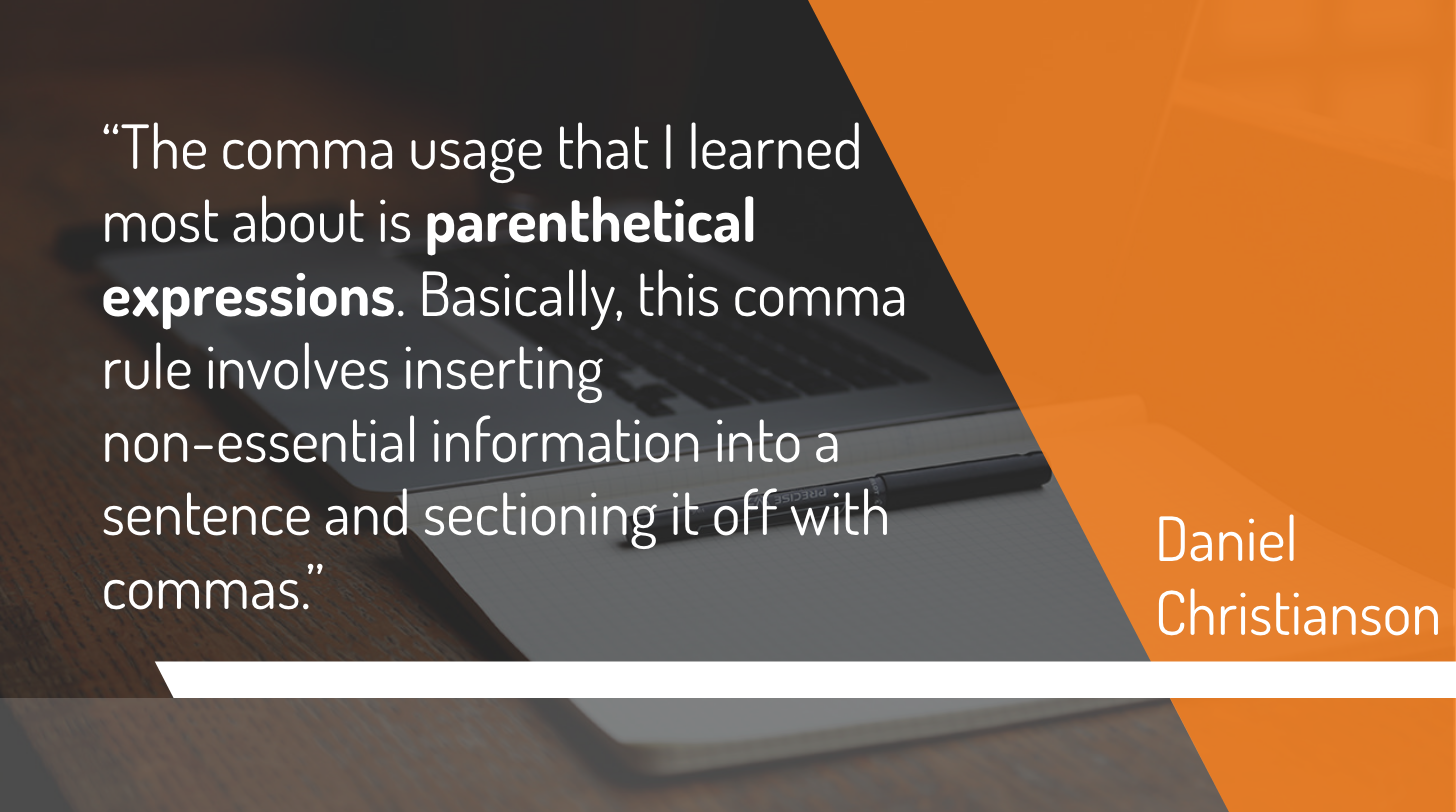Commenting with commas: When and where to use them
by Daniel Christianson
Commas can be intimidating. When I was younger I just threw them in wherever they seemed to fit. Unsurprisingly, this didn’t always work out well, and I often ended up creating choppy sentences out of perfectly acceptable ones. Recently, I got the opportunity to present a lesson on how to use commas with a variety of modifiers in sentences: transitional and parenthetical modifiers, in particular.
The comma usage that I learned most about is parenthetical expressions. Basically, this comma rule involves inserting non-essential information into a sentence and sectioning it off with commas. This sentence, for example, uses the parenthetical phrase “for example.” As you might imagine, this can be quite useful. For example: “John, who is 86, goes running every day.” The “who is 86” could be excluded from the sentence without ruining the grammar. However, it adds extra information for the reader. While this can be done to similar effect with dashes or parentheses, “John (who is 86) goes running every day”, I want to focus particularly on commas because they are the most common usage. What really made these phrases stand out to me is how they are different from transitional, restrictive, and nonrestrictive phrases. (For more on restrictive/nonrestrictive modifiers, see this blog post.) For more on transitional expressions, keep reading!
Transitional phrases are similar to parenthetical phrases; however, they involve different words, such as “however,” “additionally,” “on the other hand,” and “ordinarily.” These “phrases” are limited to those transitional words, so while they might seem similar to parenthetical phrases, they are distinct because their function is, in part, to connect the current sentence to the previous one.
Here are some examples of each.
Parenthetical expression: “George was, as usual, unwilling to leave.”
The sentence flows just was well if it were written, “George was unwilling to leave.” What the parenthetical expression tells you is that this is a usual occurrence. The sentence doesn’t need the inserted information to flow properly. Since you don’t need the parenthetical expression, you must put commas around it. You are effectively pausing the sentence to add extra information before continuing on.
More examples:
“The Arctic, although cold, is actually quite sunny.”
“I think that, as tutors, we need to be able to have good sample sentences ready for our tutees.”
Transitional phrase: “George, on the other hand, was unwilling to leave.”
Instead of providing extra, inserted information, a transitional phrase alludes to the previous sentence. This is what makes transitional phrases different from parenthetical phrases. Their primary use is for maintaining the flow of the paper rather than inserting information into a sentence.
More examples:
“The Arctic is frigid. For that reason, you need a big parka there.”
“As a rule, I think tutors should have good sample sentences ready for our tutees.”
The basic difference between these two writing elements is that parenthetical expressions are inserting something into the sentence while transitional phrases are used to connect ideas, sentences, and paragraphs.
Overall, I really enjoyed learning about commas and I hope that you were able learn something from this too.
Daniel Christianson is setting up an independent accounting major with a business minor. In his free time, he enjoys horseback riding, crocheting, and running!

